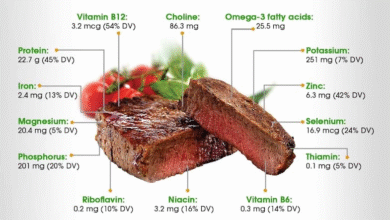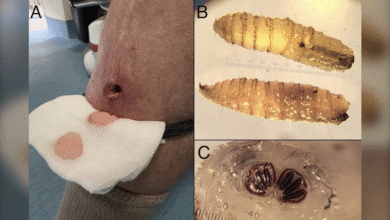Whooping Cough Hawaii: Surge Raises Urgent Health Concerns

Whooping cough, officially known as pertussis, is reemerging as a significant health concern in Hawaii, where the state has reported a noticeable increase in cases. As the Department of Health highlights, the number of whooping cough incidents has surged to alarming levels, surpassing the total cases reported in the previous year. This spike raises critical questions about Hawaii vaccination rates and the effectiveness of the DTaP vaccine in protecting against pertussis. With symptoms that can mimic a cold, being able to recognize whooping cough symptoms early is vital for prevention and treatment. Ensuring that both children and adults are fully vaccinated is essential in combating this illness and preventing a pertussis outbreak in Hawaii from escalating further.
The resurgence of whooping cough, or pertussis, underscores the pressing challenges faced by public health officials in Hawaii. Amid declining immunization rates, this highly contagious respiratory disease poses serious risks, particularly to young children. As symptoms often mirror those of other respiratory infections, raising awareness about the signs of pertussis is crucial. Vaccination remains the cornerstone of protection against this illness; however, the effectiveness of the DTaP vaccine can wane over time, necessitating booster doses for sustained immunity. Community efforts to improve vaccination uptake are vital to safeguard both individual and public health in the Aloha State.
Understanding Whooping Cough: Symptoms and Complications
Whooping cough, medically known as pertussis, is characterized by severe coughing fits that may lead to a distinctive ‘whooping’ sound during inhalation. Early symptoms typically resemble a common cold, including a runny nose, mild cough, and low-grade fever. However, as the disease progresses, the cough becomes increasingly intense and can last for several weeks, causing significant disruption to daily life and sleep. In infants, the infection can lead to complications such as pneumonia, seizures, and even death, heightening the need for awareness of whooping cough symptoms among caregivers and families.
Complications associated with whooping cough can vary widely based on age and overall health. For young infants, about one-third may require hospitalization due to breathing difficulties or severe cough. In older children and adults, while the disease can lead to significant discomfort, it can also be mistaken for other respiratory infections, delaying proper treatment. This underlines the importance of parents educating themselves on the signs of pertussis and acting swiftly if symptoms arise.
The Role of Vaccination in Preventing Pertussis
Vaccination is the most effective method for preventing pertussis outbreaks. The DTaP vaccine is administered to children under 7 years old, offering robust protection against the disease. Studies show close to 100% effectiveness when children receive the complete vaccination schedule, underscoring its critical role in safeguarding public health. Recent data indicating declining Hawaii vaccination rates, however, is concerning as it risks increased susceptibility to outbreaks of whooping cough and other preventable diseases.
Health authorities emphasize that maintaining high vaccination rates is essential not only for individual protection but also for community immunity. With decreased vaccination rates in Hawaii, there is an elevated risk for pertussis outbreaks, potentially leading to increased hospitalizations and health complications. Continuing public health outreach and education regarding the benefits of vaccination, alongside addressing vaccine hesitancy, are crucial strategies for protecting the state’s most vulnerable populations.
Whooping Cough Outbreaks: Hawaii’s Growing Concern
Hawaii has recently experienced a concerning rise in pertussis cases, particularly with 108 cases reported as of mid-May 2025, surpassing 2024’s total. This surge is mostly due to lowered vaccination rates, which have fallen below national averages, according to the State Department of Health. Such outbreaks highlight an urgent public health issue, drawing attention to the need for effective vaccination strategies and community awareness campaigns to protect against pertussis.
The rise in cases, amid a backdrop of declines in routine immunizations, indicates a pressing need for community engagement and education about the consequences of vaccine hesitancy. Health experts warn that the best way to combat the surge in whooping cough is through the DTaP vaccine. This scenario serves as a reminder that the impact of declining vaccination rates can have far-reaching effects on community health and safety, necessitating urgent action to reverse this trend.
Hawaii’s Vaccination Rates: A Public Health Challenge
The State of Hawaii has reported troubling statistics regarding childhood vaccine rates, particularly in the context of the DTaP vaccination for pertussis. According to health officials, immunization rates have fallen significantly since 2019, leading to increased vulnerability amongst children and the wider community. With not only whooping cough but also other preventable diseases on the rise, understanding these trends is vital for public health planning and resource allocation.
Addressing the decline in vaccination rates involves a multifaceted approach, including community education on vaccine safety and effectiveness, outreach programs targeting hesitant populations, and strategies to ensure easier access to vaccines. The state’s health authorities emphasize that improving Hawaii’s vaccination rates can significantly mitigate the risks associated with whooping cough and contribute to the overall health of its residents.
Understanding the DTaP Vaccine: Effectiveness and Recommendations
The DTaP vaccine is fundamental in preventing whooping cough in children under the age of 7. When administered according to the recommended schedule, comprising five doses, its effectiveness approaches near-complete protection against pertussis. Medical professionals recommend starting the vaccination process at two months of age, ensuring children receive boosters at critical developmental stages. This systematic approach is vital in establishing long-term immunity against whooping cough.
However, it is essential to note that immunity provided by the DTaP vaccine can diminish over time, especially in older children and adults, which is why the Tdap booster vaccine is recommended for those aged 11 and older. This booster significantly reduces the possibility of spreading pertussis among populations, emphasizing the importance of continued vaccination efforts throughout an individual’s life to protect both themselves and their communities.
Public Health Strategies to Combat Pertussis
In response to the increasing cases of whooping cough in Hawaii, public health strategies must be robustly implemented. Targeting awareness and educational campaigns is crucial, especially in communities with low vaccination rates. The Department of Health can utilize local media, schools, and community organizations to disseminate information about the importance of the DTaP and Tdap vaccinations. Strategies that strengthen relationships with healthcare providers are also necessary, as these practitioners can directly influence vaccine uptake.
Additionally, health departments should consider more accessible vaccination services, including community clinics and school-based vaccination programs. These initiatives can help dismantle barriers to vaccination by making it easier for families to receive the required immunizations. Ensuring the public understands that protecting against pertussis starts with vaccination is critical in reversing the concerning trends in Hawaii’s current whooping cough situation.
The Importance of Boosters in Maintaining Protection
While initial vaccination with the DTaP vaccine provides strong protection against whooping cough, the efficacy of this protection can wane over time. To address this, health guidelines recommend booster shots with the Tdap vaccine, particularly for adolescents and adults. This immunization strategy not only helps maintain personal immunity but also plays a crucial role in reducing the potential spread of pertussis within communities.
Health experts assert that without periodic boosters, individuals become increasingly susceptible to infection, which exacerbates the risk of outbreaks, especially in areas like Hawaii where vaccination rates are already declining. Therefore, public health messaging must highlight the necessity of routine booster vaccinations throughout life to bolster community immunity and effectively combat the resurgence of diseases like whooping cough.
Protecting Vulnerable Populations: Infants and Immunocompromised
Infants and individuals with weakened immune systems are particularly vulnerable to whooping cough, making community vaccination efforts even more critical. According to experts, infants who contract pertussis are at a markedly higher risk of severe outcomes, including hospitalization. Protecting these high-risk groups necessitates a collective commitment from vaccinated individuals to create a safer environment.
Health professionals recommend that pregnant women receive the Tdap vaccine during their third trimester to pass protective antibodies to their newborns. This proactive step ensures that infants begin life with some level of immunity against whooping cough until they can receive their own vaccinations. Such strategies underscore the importance of vaccination not just for individual protection, but as a shared responsibility within communities.
Addressing Vaccine Hesitancy: The Path Forward
Vaccine hesitancy remains a significant barrier to controlling whooping cough outbreaks, particularly in Hawaii. Misinformation surrounding vaccine safety and efficacy contributes to declining immunization rates, fueling concerns about outbreaks of preventable diseases like pertussis. Engaging communities through outreach, addressing fears, and dispelling myths about vaccinations are essential to restoring confidence in immunization programs.
Public health officials need to implement educational initiatives that empower communities with factual information about the risks of the diseases as well as the protective benefits of vaccines. By fostering a culture of informed decision-making and actively combating misinformation, Hawaii can work towards improving vaccination rates and protecting its most vulnerable populations from whooping cough.
Frequently Asked Questions
What are the symptoms of whooping cough in Hawaii?
In Hawaii, whooping cough, or pertussis, often begins with cold-like symptoms such as a runny nose, sneezing, and mild cough, which can progress to severe ‘intense coughing fits’. These fits may end with a ‘whooping’ sound as the individual gasps for breath. It’s crucial to recognize these symptoms early, especially in infants and children, as complications can arise.
How effective is the DTaP vaccine against whooping cough in Hawaii?
The DTaP vaccine is highly effective in protecting against whooping cough in Hawaii, providing close to 100% protection when the full vaccination schedule is completed. It is administered in five doses starting at two months of age, with boosters recommended to maximize immunity against pertussis.
What measures are being taken to protect against the pertussis outbreak in Hawaii?
To protect against the pertussis outbreak in Hawaii, the Department of Health promotes high vaccination rates, encouraging parents to ensure that their children receive the DTaP vaccine according to the recommended schedule. Community awareness and education on the importance of vaccinations are also crucial in preventing further outbreaks.
Why are Hawaii’s vaccination rates for whooping cough declining?
Hawaii’s vaccination rates for whooping cough and other routine vaccinations have been declining since 2019, mainly due to vaccine hesitancy and misinformation. This decline has raised concerns about the potential for pertussis outbreaks as lower immunization can lead to increased transmission of the disease.
Can adults contract whooping cough in Hawaii?
Yes, adults can contract whooping cough in Hawaii, especially if they are not up to date with the Tdap booster vaccine. While the DTaP vaccine protects children, adolescents and adults are recommended to receive the Tdap vaccine to maintain immunity and reduce the spread of pertussis.
What populations are at higher risk for complications from whooping cough in Hawaii?
In Hawaii, infants under one year old and individuals with weakened immune systems are at higher risk for complications from whooping cough, including hospitalization. The Department of Health emphasizes that vaccination of pregnant women and family members is essential to protect these vulnerable populations.
How does whooping cough spread in Hawaii?
Whooping cough spreads easily in Hawaii through respiratory droplets when an infected person coughs or sneezes. Due to its highly contagious nature, maintaining high vaccination rates is vital to prevent outbreaks among the community.
What can I do to protect my family from whooping cough in Hawaii?
To protect your family from whooping cough in Hawaii, ensure that all eligible family members are up to date with their vaccinations, including the DTaP for children and Tdap for adolescents and adults. It’s also important to maintain good respiratory hygiene and stay informed about local health advisories.
Is there a pertussis outbreak currently happening in Hawaii?
Yes, as of May 2025, Hawaii has reported a concerning rise in whooping cough cases, with 108 reported cases that already exceed the total cases in 2024. The Department of Health continues to monitor the situation closely and recommends vaccinations to protect against a potential outbreak.
| Key Points | Description |
|---|---|
| Whooping Cough Increase | Hawaii has reported a surge in whooping cough cases, with 108 confirmed cases as of May 15, 2025. |
| Comparative Data | This number already exceeds the total cases from 2024, which were 84. |
| Transmission | Pertussis is a highly contagious respiratory disease transmitted through the air. |
| Symptoms | Symptoms begin like a cold but can progress to severe coughing fits. |
| Complications | Serious complications can include pneumonia, seizures, and death, especially in young children. |
| Vaccination Importance | Vaccination with DTaP for young children and Tdap for older children and adults is crucial for prevention. |
| Current Vaccination Rates | Hawaii’s childhood vaccination rates are below the national average, leading to increased pertussis cases. |
| Public Health Recommendations | The DOH recommends staying up to date with vaccination to prevent outbreaks and protect vulnerable populations. |
Summary
Whooping cough in Hawaii has become a pressing public health issue with the recent surge in cases reported. The State of Hawaii’s Department of Health has highlighted the importance of vaccination in preventing this highly contagious disease. Ensuring that children and adults are up to date with their DTaP and Tdap vaccinations is crucial to mitigating the risks associated with pertussis. Increased immunization rates are vital to overcoming the challenges posed by vaccine hesitancy, thereby protecting infants and the wider community against this serious respiratory illness.




